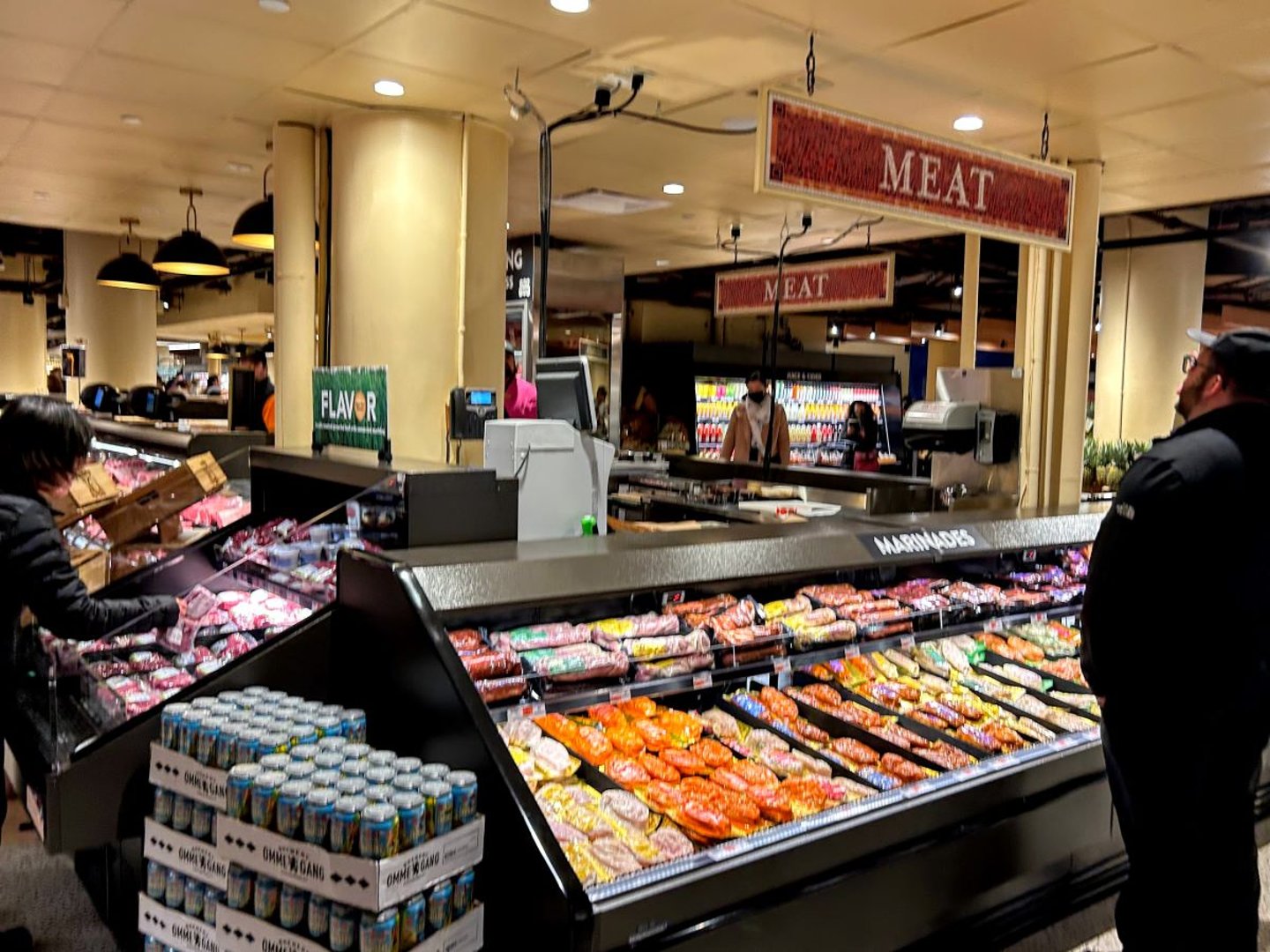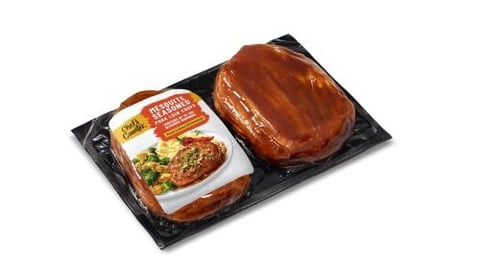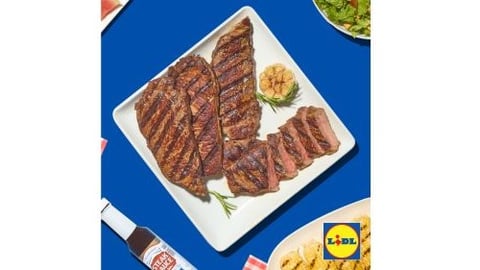Additional Selling Points for Premium Meats
The opportunity to generate more premium meat sales today gives every indication of growing despite, and, in some cases, because of, inflation and consumers making decisions about where they want to sit down and enjoy a meal that delivers an elevated center-of-the-plate experience.
Yet, while tradition is critical in the category, the definition of premium meat has expanded. A fine cut of New York strip remains a signature image of premium meat. Still, “premium” can mean different things to different people today as consumer preferences change regarding what is considered extraordinary.
[RELATED: Meat Continues to Dominate Grocery Fresh Departments]
Beyond trim and marbling, consumers are factoring in the methods used in raising livestock, considering such methods as grass feeding to not only fulfill their desire for sustainability, but also to provide a higher-quality meat. Then, at a time when consumers are more daring in their dining, exemplary products from more exotic cuisines can take on a premium aspect, especially if they have characteristics that elevate the proposition behind them, such as better nutritional qualities.
The core of premium meat remains dynamic, with steak still representative. The position of premium steak cuts is about tradition, but that isn’t all. As protein has become a more important consideration, consumers have begun looking for more ways to enjoy it. That means there’s an opportunity to sell more premium products.
Protein Power
“Consumers have never wanted more protein,” says Lucy Woods, consumer insights senior manager at Wayzata, Minn.-based Cargill.
Cargill’s 2025 Protein Profile team has determined that protein reigns supreme as the most critical macronutrient in North American diets, with 61% of consumers increasing their protein intake in 2024, up from 48% in 2019.
“With all the news and the inflation over the past couple of years, you would think that consumers are only buying ground meat and chicken, which we have had seen them shifting into ground meat and chicken as more affordable proteins, but we’ve also seen spikes in steak, which has been really interesting,” notes Woods. “We did not see that coming, with all the headlines of inflation, but when we spoke with consumers, we found out that they’re … creating that restaurant experience at home. That’s putting a little fuel behind the sales of steak from grocery stores: Consumers are creating that experience at home.”
[RELATED: SpartanNash Debuts In-Store Brat Shop]
Meat producers with a premium tale to tell are in some cases looking to grab consumer attention through variations on recognized premium products based on defined characteristics. For example, Creekstone Farms, based in Arkansas City, Kan., recently debuted Irodori Wagyu, a product developed using Black Angus genetics and a unique fat composition that renders at a lower heat, for bold flavor and a buttery texture, as the company describes it. Creekstone has incorporated Irodori Wagyu in a product line that already includes Premium Black Angus Beef and All-Natural Heritage Duroc Pork.
Greater Variety
The ability to stand out from mainstream products and offer consumers the promise of a better eating experience is consistent with shoppers’ desire to do so at home.
For instance, Lancaster, Pa.-based Sunbird Poultry has launched a premium all-natural chicken line that, according to the company, provides exceptional taste and quality at an accessible price. Sunbird takes a breed-specific approach to its fowl, using heritage breed Hubbard Ross and Cornish Cross varieties that are raised humanely and antibiotic-free, and air-chilled for peak freshness. The company places QR codes on every package for transparency, linking the consumer to sourcing information while attributing the chicken’s better flavor and tenderness to both its breeding program and a proprietary all-natural non-GMO vegetarian diet.
“There hasn’t been much new product development in the chicken market, and we saw a need to offer chefs a better-tasting product with strong marketability,” says Mike Saperstein, owner of Sunbird Poultry. “It checks all the boxes for the modern health-conscious customer. … We offer this product in both all-natural and organic varieties.”
“Consumers are increasingly seeking variety, convenience and flavor driven by a growing interest in trying new cuts and cooking methods, more home-prepared meals, and a shift toward value-added options like pre-marinated pork,” observes Ozlem Worpel, VP of marketing and innovation at Merriam, Kan.-based Seaboard Foods, producer of Prairie Fresh pork products. “Innovations such as Prairie Fresh’s newly announced ground pork/sausage reflect this demand for affordable, flavorful and easy-to-use products.”
The truth is that defining premium meat isn’t necessarily easy these days, because, even if particular cuts and defined products in the premium meat category are central to it, a whole range of products and varieties of meat have emerged that could also wear the mantle.
The approach taken by Swedesboro, N.J.-based Thomas Foods International, for example, is influenced by specific claims made by producers. The claims-based definition makes sense to consumers who want meat that’s conceptually appealing to them. Grass-fed and, for many, grass-finished meat, for example, appeals not only because of the way the animals are treated, but also because the meat has a reputation for being higher in omega acids, isn’t raised with antibiotics, and has a cleaner profile and flavor, according to Danielle Marta, VP of marketing innovation for Thomas Foods International.
[RELATED: 4 Trends From the Annual Meat Conference]
Thomas ranges across the premium meat space, with such offerings as Angus beef and Wagyu, which once could be characterized as specialty meat products but today are more mainstream, even if they maintain an upscale aura. The company’s product range can satisfy the curious consumer and those looking for healthy alternative proteins.
Even with products that might seem more confined to ethnic grocery stores, things are changing. Today, major supermarket chains are carrying the company’s free-range, low-fat ground goat to give shoppers who want to embrace new flavors and nutritional profiles another choice.
Keeping It Clean
As noted, with the preference many consumers are showing toward specific methods of raising farm animals, meats can gain a premium profile depending on livestock treatment. The appeal here includes sustainability and humane treatment, but many consumers also believe that more natural methods elevate the flavor to premium status.
“At True Story, we define specialty meat as high-quality, responsibly sourced protein that stands apart from commodity offerings in both flavor and farming practices,” says McKiernan Flaherty senior brand manager at Fairfield, Calif.-based True Story Foods. “While premium positioning plays a role, it’s really about transparency, animal welfare and the story behind the product. Over time, the definition has evolved from indulgence-driven to purpose-driven. Today’s shopper cares about what’s not in their food just as much as what is.”
True Story, which focuses on Kurobuta, also known as Berkshire, hogs, describes its products as the “Wagyu of pork.” The company recognizes the value of providing a clear sense of how it approaches its products and what that means in practice.
“We communicate the premium nature of our Kurobuta pork by emphasizing its breed-specific traits — tender texture, rich marbling and full flavor — alongside our clean-label commitments,” explains Flaherty. “We lean into education, especially on social and in sampling moments, to bridge the gap for shoppers who might not yet be familiar with Kurobuta. Consumers respond well once they try it. It delivers a noticeable flavor difference. Clean quality is core to our value proposition and a strong purchase driver among our target consumers.”
The way that Don McIntyre, CEO of Chicago-based Whetstone Distribution, looks at it, premium meat “encompasses products that go beyond conventional commodity cuts. It’s not just about premium positioning or price point. It often includes meats with deep roots in ethnic cuisine, such as oxtail, goat, tripe or whole poultry cuts. It can also include unique animal breeds, specific feeding or raising practices, or heritage breeds, and lesser-known or value-added cuts. Over time, the definition has broadened. What once might have been confined to high-end steakhouse selections is now more inclusive of global, ethnic influences.”
In the end, the changing outlook for premium meat is driven by the consumer, according to Patricia Bridges, senior director of marketing and communications at Coleman All Natural Meat, in Golden, Colo.
“Our customers are looking for more than just ‘all natural’ and humane-raising claims,” asserts Bridges. “They want transparency from the meat brands they buy, and they want to know that the meat they purchase is from U.S. family farms. We also know that taste plays a huge role. There is an increasing demand for bold flavors, heritage breeds and gourmet meals at home. We are seeing a higher demand for protein-focused diets; consumers are looking for new items in a familiar form that is convenient, affordable, and has a variety of tastes, offerings and flavors. Coleman All Natural Meats continues to innovate to add different flavor varieties to our portfolio that elevate meals in a convenient and affordable way. Our products … can be used in many ways to enhance dishes, including soups, stews and pasta dishes.”











